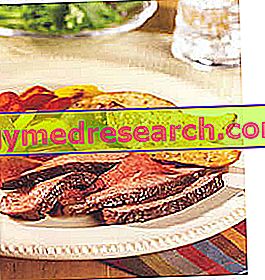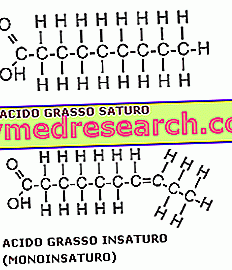What is Anemia
Anemia is a disease that often has nutritional origins, therefore, some changes in the diet could significantly improve the pathological and symptomatic picture of the patients who are affected.

Hemoglobin values
Anemia is a generic alteration of the hemoglobin (Hb) blood values which affects the subject's general health status; the cutoffs (or threshold values) for Hb indicating anemia are:
- <14 mg / dl in humans
- <12 mg / dl in women
- <11 mg / dl in pregnant women
The reduction in Hb is directly related to the decrease in hematocrit (Hc), which is responsible for the ability to transport oxygen to the tissues; the cutoffs for HC that indicate anemia are:
- <40% in humans
- <37% in women
Causes
Anemia differs according to the etiopathological agent responsible for its appearance; the anemic forms that derive from the incorrectness or insufficiency of the diet are: anemia sideropenia (from iron deficiency [Fe] nutritional) and pernicious anemia, (from nutritional vitamin deficiency: folic acid and / or cobalamin - B12).
Often, food insufficiency is associated with:
- the reduction of intestinal absorption capacity (intestinal pathologies such as celiac disease, neoplasms, surgical resections, steatorrhea, chronic diarrhea, straight ulcerative colitis, Crohn's disease, etc.)
- the alteration of the production of gastric intrinsic factor (responsible for the activation of cobalamin [B12] and without which it is not absorbed in the terminal ileum)
- nutritional insufficiency of viamine C (ascorbic acid - responsible for increasing the iron absorption potential)
- abuse of anti-inflammatory drugs (such as aspirin)
- hematuria (urinary excretion of the hematocrit usually caused by renal failure)
- hemolysis (early and pathological destruction of red blood cells)
- pathological or physiological hemorrhages (eg the menstrual cycle - for this reason the fertile female population is extremely more prone to anemia than the others).
Symptoms
The symptoms of anemia are mainly related to fatigue (fatigue and fatigue), difficulty concentrating, headache (headache), dizziness (especially in the transition from lying to erect) and fissures at the corners of the mouth (small or large cuts). Obviously, the symptomatological manifestation of anemia can be extremely wide and varied, especially if characterized by a long pathological history.
Diet for anemia
The diet for anemia must satisfy satisfactorily the subjective nutritional needs, with particular reference to the intake of iron, folic acid and cobalamin, nutrients for which the LARN * suggest the following daily rations :
| IRON | FOLIC ACID | COBALAMINA (Vit B12) | |
infants | 7mg | 50mcg | 0, 5mcg |
children | 7-9mg | 100-150mcg | 0, 7-1, 4mcg |
Males> 11 years | 12mg | 180-200mcg | 2mcg |
Pre-pubertal females | 12mg | 180-200mcg | 2mcg |
Females of childbearing age | 18mg | 180-200mcg | 2mcg |
Females in menopause | 12mg | 180-200mcg | 2mcg |
Pregnant females | 30mg | 400mcg | 2, 2mcg |
Nurse females | 18mg | 350mcg | 2, 6mcg |
* Recommended levels of nutrient intake for the Italian population
The dietary recommendations for anemia are different:
- first of all, it is advisable to reach the recommended rations mentioned above (it is not easy! Especially for pregnant women, nurses and for those who follow diets such as veganism, all categories of subjects to whom specific supplements are often prescribed). To learn more, read the article: iron-rich foods
- secondly, it is essential to verify that the intake of iron in the diet is covered for about 2/3 by its reduced form, called ferrous iron (Fe ++ or heme iron, which is found above all in foods of animal origin (meat, fish, eggs) bound to the heme (functional group of hemoglobin) On the contrary, ferric iron (Fe +++) deriving from foods of vegetable origin (green radicchio, spinach, rocket etc.) should constitute at most 1/3 of the total iron, since, being in oxidized form, it is poorly bioavailable to intestinal absorption To learn more read the article: intestinal absorption of iron
- The diet for anemia must also guarantee the essential vitamin supply of folic acid and cobalamin (essential for the synthesis of cellular nucleic acids, and therefore also of red blood cells). The most generous food sources of folic acid are green leafy vegetables: spinach, broccoli, asparagus, lettuce etc., while vitamin B12 is abundant in products of animal origin: meat, eggs and fish.
- The supply of vitamin C, which reacts chemically together with iron, is also of fundamental importance. In the intestinal lumen, ascorbic acid intervenes preserving the reduced form of ferrous iron and tends to convert (thus reducing) the ferric ion into ferrous, enhancing its bioavailability to intestinal absorption. Moreover, it favors the transfer from the plasma transferrin (iron transport protein in the blood) to the tissue one and increases the cellular bioavailability by increasing the stability of the bond itself. The addition of lemon to a red meat steak is therefore ideal to ensure the absorption and bioavailability of iron in the anemic's diet.
- In the anemia diet it is also advised not to introduce foods containing high amounts of calcium, phosphorus and iron into the same meal, as these ions easily enter into competition due to intestinal absorption (generally in favor of phosphorus and football). In the anemic diet, therefore, we do not recommend the combination of meat and cheese or other dairy products within the same meal.
- Furthermore, it would be advisable to limit the consumption of foods with a high phytate content (eg black tea) and oxalates (for example rhubarb); these molecules constrain iron due to their chelating function, reducing their uptake by enterocytes.
See also: Athlete's Anemia Diet »



